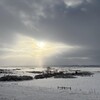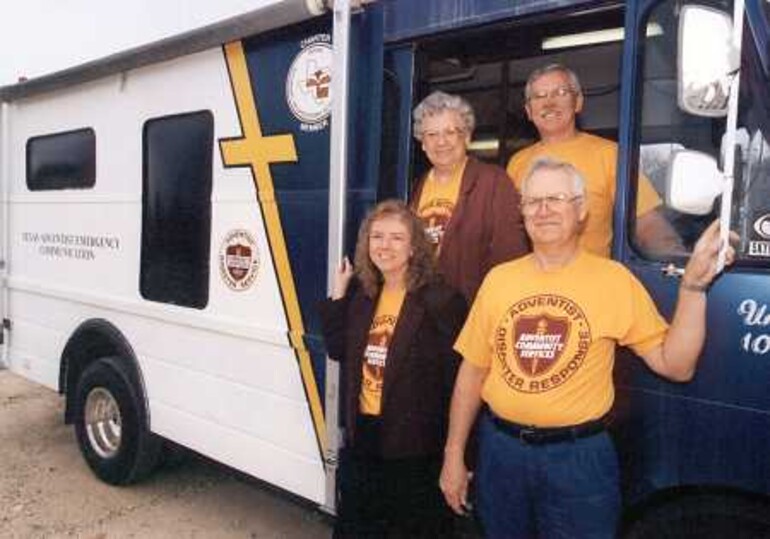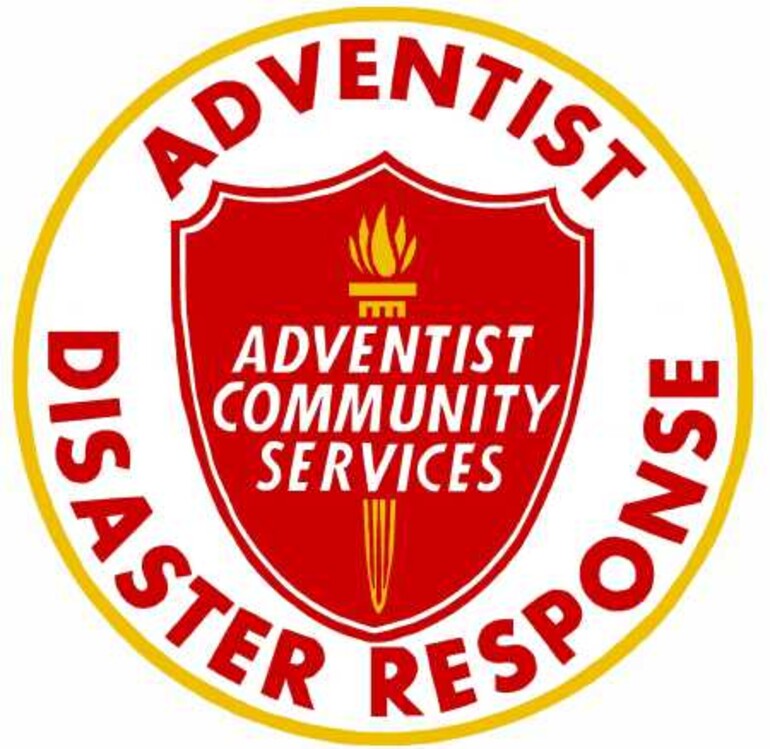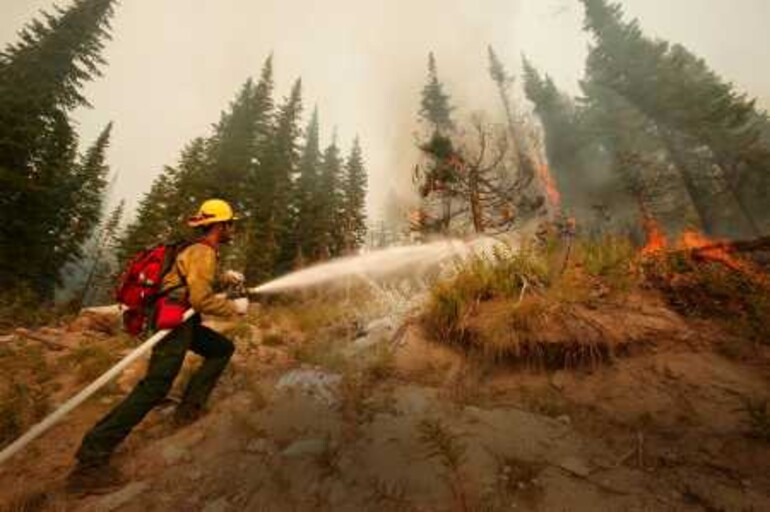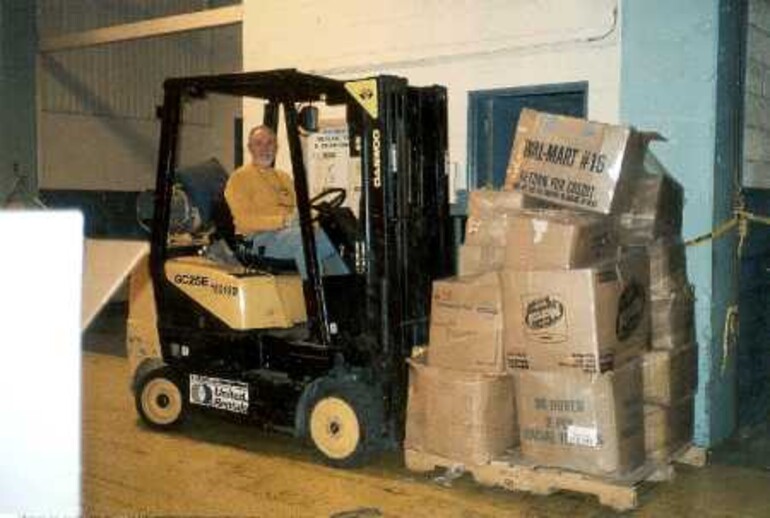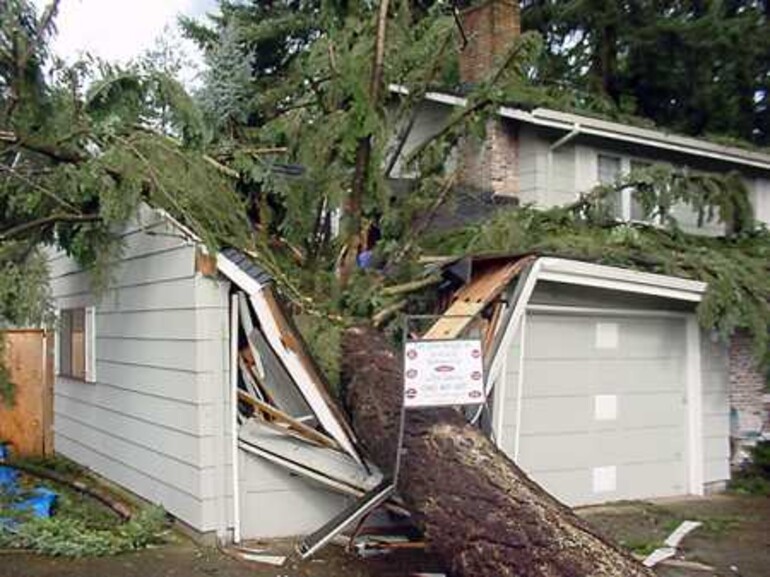Whenever and wherever disaster strikes in the Northwest and around the nation, Adventist Community Services Disaster Response (ACSDR) is there to help.
Disaster response is an integral part of the national and local Adventist Community Services (ACS) program. Each union and most conferences within the United States have a disaster response coordinator, as do many ACS federations and local churches. In addition, many church members are trained and certified in several aspects of disaster preparedness and response.
The fact that disaster response is part of the larger nationwide ACS organization with comprehensive training requirements for its volunteers is important for the program’s acceptance by emergency management professionals, other volunteer organizations and government agencies. The North American Division (NAD) ACS has a formal agreement with the Federal Emergency Management Agency (FEMA) to provide specific relief services during a disaster.
ACS coordinates with a variety of other faith-based and non-government organizations, such as the Red Cross, Salvation Army and Mennonite Disaster Service, through membership in National Voluntary Organizations Active in Disaster (NVOAD). This ensures that timely, effective and necessary services are available to disaster victims, their families and communities.
ACSDR volunteers are responsible for and are recognized experts in:
• Emergency distribution of relief supplies, such as drinking water, groceries and clothing.
• Warehouse operations where volunteers sort, package and store donated goods for distribution.
• Donation coordination centers where donors can ascertain the real needs of disaster victims and donate goods.
• Crisis response counseling, which can help provide victims, their relatives and neighbors with an opportunity to ask questions, talk informally about their situation or request prayer.
Local ACS volunteers provide or assist with other services such as mass feeding and sheltering during local emergencies and disasters.
“Oh good, here come the Adventists!” exclaimed a local emergency manager in Texas as his community organized to respond to devastation caused by a hurricane. He and emergency managers and responders around the country know, respect and rely on the relief efforts of ACSDR. At Ground Zero on Sept. 11, 2001, the Adventist disaster van was one of the first on the scene. During Hurricane Irene, ACSDR provided organized warehousing and distribution of donated relief supplies.
These reports are wonderful and inspiring, but what about here in Northwest conferences and local churches?
Adventists in Alaska, where 10 major disasters have occurred in the last few years, have sought to establish working relationships with their city, borough, state and federal (FEMA) disaster response organizations. Conference ASC director Jim Kincaid is chairman of the state VOAD, and several Alaska pastors are involved in disaster and relief organizations.
“A sustained role in this arena helps to give our churches an opportunity to have an impact on the community for God,” Jim notes.
Many other Alaska church members volunteer with the Red Cross and are trained for ACS Disaster Response.
Idaho Conference divides its disaster preparedness and response activities into three regions: Eastern Idaho, Treasure Valley and Eastern Oregon. Idaho disaster response leader and volunteer trainer Betty Soule reports that leaders and volunteers throughout the region are ACS trained and a number have additional training through the Oregon VOAD.
For several years the Idaho VOAD has held its annual meeting at Camp IdaHaven, the conference youth camp. Betty says, “The blue waters, the clean air, the green firs and the vegetarian food found at the camp cause peace to settle upon all the attendees." Idaho VOAD will hold its fourth annual meeting there in October.
Montana Conference ACS director David Prest wears many hats. As is typical in many conferences, staff must balance a number of programs and ministries, and lay leaders and local church members need to take an active leadership role, which, as David notes, is really the way it should be.
The challenge in the smaller conferences especially is to develop a trained and active cadre of disaster response volunteers in small congregations scattered over a vast landscape. Montana is blessed to have a number of trained disaster volunteers around the state, but many more are needed to provide the level of response and care necessary.
In the Oregon Conference, each local church chooses a church disaster/safety coordinator who is a member of the local church board and whose duties range from forming a local church disaster response team to ensuring the safety of church premises and attendees. During a disaster, the coordinator represents the local church to community responders, makes decisions and leads out in response plans.
The conference's community services department and risk management office offer training specifically for the local church disaster/safety coordinator at least annually. The conference also offers an incentive package for local churches to lower their property insurance if they participate in disaster-preparedness activities.
Two disaster coordinators, Sharon Elliott of Orofino, Idaho, and Donna Hutchcroft of Moses Lake, Washington, serve the “Inland Empire” of the Upper Columbia Conference, which stretches into parts of three states. Betty Soule, Idaho disaster response trainer, says that Donna “hops on her motorcycle and goes where she is needed.” Recently Donna and other representatives from the NPUC area attended an Adventist disaster response summit in Louisville, Kentucky, convened by Sung Kwon, NAD ASC executive director. They participated in the planning for reorganization of the program to allow for greater coordination at the union and conference level and to update training materials.
Dan Solis, associate pastor of the Village Church in College Place, Wash., is the NAD disaster response consultant for the NPUC. He is a master trainer who certifies those who complete ACSDR training.
Gill Bahnsen and Gerald Hudgens are full-time AmeriCorp volunteers serving the Washington Conference as disaster response specialists. Their duties include volunteer recruitment and the development of disaster plans for Adventist churches and schools.
Their marketing plan targets three or four churches in each ACS federation every two months, and they have trained more than 200 church members in the ACS Disaster Response program to date.
Your local ACS needs you. Every church should have individuals who are trained to respond to emergencies and disasters. Talk to your church ACS leader. Who is your church’s disaster coordinator? There isn’t one? There’s your chance to participate!
Find out about natural and man-made hazards in your community. Take advantage of local Red Cross first aid and disaster-related classes. Check into Community Emergency Response Team (CERT) training offered by many local emergency preparedness agencies.
And enroll in the ACSDR training program. Your ACS leader can help you locate the next and nearest training session. Note the announcement in this issue of the GLEANER regarding the NAD ACS Disaster Response Training Institute to be held at the Gladstone (Ore.) Conference Center in September.
The enthusiasm apparent in the many people involved in disaster preparedness and response is framed with an urgent plea for involvement by local churches and most particularly by every church member. Who knows when the opportunity will arise to help a neighbor—or perhaps our own family—in need because of the uncertainties of this world?

